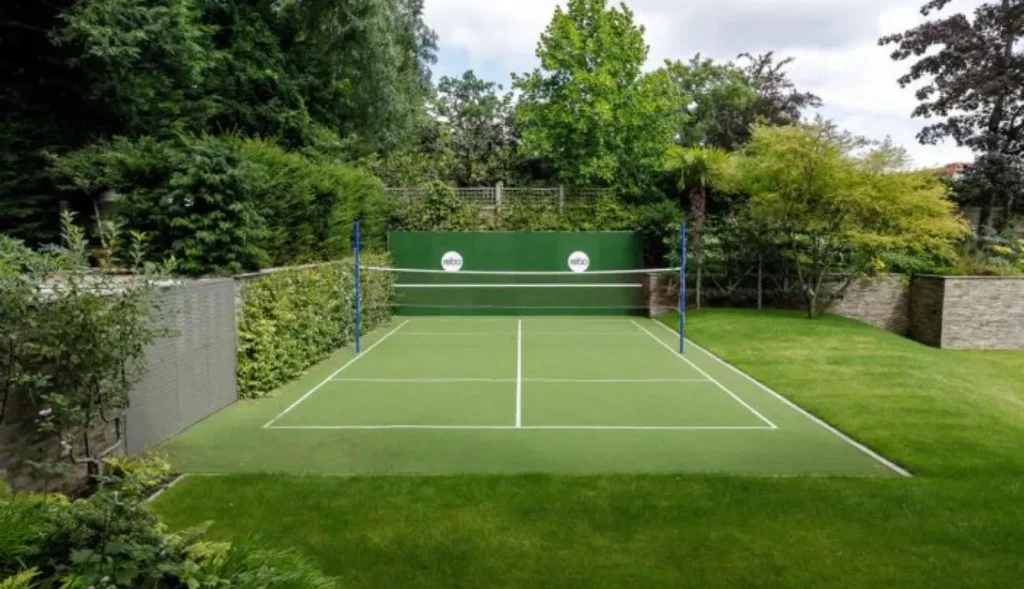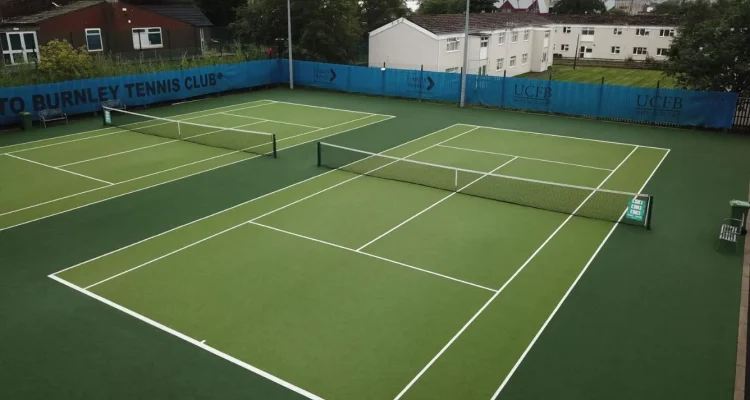Introduction
Building a tennis court can be an exciting project, whether you’re a sports enthusiast or simply looking to enhance your property’s value. With the right planning and execution, you can create a high-quality tennis court that provides countless hours of enjoyment. In this guide, we’ll walk you through the essential steps to making your tennis court, from initial planning to final touches.

Planning Your Tennis Court
Choosing the Right Location
The first step in constructing a tennis court is selecting an ideal location. Look for a flat, well-drained area with minimal shade from trees or structures. Proper drainage is crucial to prevent waterlogging and maintain the court’s usability throughout the year.
Understanding Local Regulations
Before you begin, it’s important to check local regulations and zoning laws. Some areas have specific requirements or restrictions for building sports facilities, so ensure you have the necessary permits and approvals.
Budgeting for Your Project
Creating a tennis court can be a significant investment. Establish a clear budget that includes costs for site preparation, materials, labor, and maintenance. Remember to allocate funds for unexpected expenses.
Design Considerations
Court Dimensions and Layout
A standard tennis court measures 78 feet long and 36 feet wide for doubles play. Ensure your design accommodates these dimensions, along with additional space around the court for player movement and safety.
Surface Types
Choosing the right surface for your tennis court depends on your preferences, climate, and budget. Here are the main options:
- Grass: Offers a traditional feel and fast-paced game but requires regular maintenance.
- Clay: Provides a slower game and is easier on players’ joints but can be affected by weather.
- Hardcourt: Durable and low-maintenance, ideal for various weather conditions.
- Artificial Turf: Low-maintenance and suitable for all weather, mimicking grass or clay.
Net and Line Placement
Ensure the net is installed at the correct height of 3 feet in the center. Mark the court lines with high-quality paint or tape, ensuring they meet official standards.
Preparation Work
Clearing and Excavation
Start by clearing the area of any vegetation, debris, and rocks. Excavate the site to the required depth based on the chosen surface type and ensure a level base.
Drainage Solutions
Proper drainage is essential to prevent water accumulation and maintain the court’s quality. Install drainage systems such as French drains or gravel layers to facilitate water runoff.
Base Material Selection
Select a base material that provides stability and support for the surface layer. Options include crushed stone, gravel, or a specialized base mix.
Constructing the Court Surface
Installing a Base Layer
Lay down the base layer material and compact it thoroughly. This layer should be level and smooth to provide a solid foundation for the surface layer.
Surface Layer Options
- Grass: Seed or sod the area, ensuring even coverage and proper irrigation.
- Clay: Apply a layer of clay and compact it, maintaining a smooth surface.
- Hardcourt: Install asphalt or concrete, followed by an acrylic surface coating.
- Artificial Turf: Roll out the turf and secure it, ensuring proper alignment and anchoring.
Ensuring Proper Drainage
Check that the drainage systems are functioning correctly and that water flows away from the court. Adjustments may be needed to ensure optimal performance.
Net and Line Markings
Installing the Net
Install the net posts and tension the net to the correct height. Ensure the net is centered and perpendicular to the sidelines.
Marking the Lines
Use high-quality paint or tape to mark the court lines. Regularly check and refresh the markings to maintain visibility and accuracy.
Regular Maintenance
Keep the court clean and in good condition by regularly sweeping debris, checking for surface wear, and performing necessary repairs.
Safety and Maintenance
Regular Maintenance Tips
Regular maintenance includes cleaning, inspecting for damage, and addressing issues promptly. Maintain proper drainage and ensure the surface is even and safe for play.
Safety Precautions
Ensure the court area is free of hazards and that the net and lines are correctly positioned. Properly maintain surrounding areas to prevent accidents.
Repairing Common Issues
Address common issues such as cracks, uneven surfaces, or drainage problems promptly to avoid further damage and ensure the court remains playable.
FAQs
What is the best surface for a tennis court?
The best surface depends on your preferences and local climate. Grass offers a classic feel, clay is easier on joints, hardcourt is durable, and artificial turf is low-maintenance.
How long does it take to build a tennis court?
Building a tennis court typically takes 6-12 weeks, depending on the surface type, weather conditions, and complexity of the project.
Can I build a tennis court on a sloped area?
Building a tennis court on a sloped area is possible but requires additional site preparation and grading to ensure a level playing surface.
What are the common problems with tennis courts?
Common issues include surface wear, cracks, drainage problems, and incorrect line markings. Regular maintenance helps prevent and address these issues.
How much does it cost to maintain a tennis court?
Maintenance costs vary based on the surface type and usage. Generally, annual maintenance costs can range from a few hundred to a few thousand dollars.

Conclusion
Creating a tennis court involves careful planning, precise construction, and ongoing maintenance. By following these steps, you can build a high-quality court that provides a great playing experience and enhances your property. Whether you’re a seasoned player or a beginner, having your own tennis court can be a rewarding addition to your home.


Congratulation!